Are you struggling to improve your tennis game? Do you feel like you’re stuck in a rut, unable to beat your opponents or reach the next level? Many tennis players face this frustrating problem, watching their peers advance while they remain stagnant.
The truth is, without a solid foundation in tennis techniques, you’ll always be playing catch-up. Your serves lack power, your forehands are inconsistent, and your footwork leaves you out of position. This can lead to discouraging losses and a growing sense that you’ll never reach your full potential on the court.
But don’t give up hope! The solution lies in mastering the fundamentals of tennis. By focusing on key areas like serving, groundstrokes, volleys, footwork, and mental preparation, you can transform your game from amateur to impressive.
In this comprehensive guide, we’ll break down essential tennis techniques step by step. From perfecting your tennis serve to developing a winning mindset, you’ll learn everything you need to take your tennis skills to the next level. Whether you’re a beginner or looking to refine your existing abilities, this guide will help you build a strong foundation for success on the court.
Table of Contents
The Basics of Tennis: Getting Started
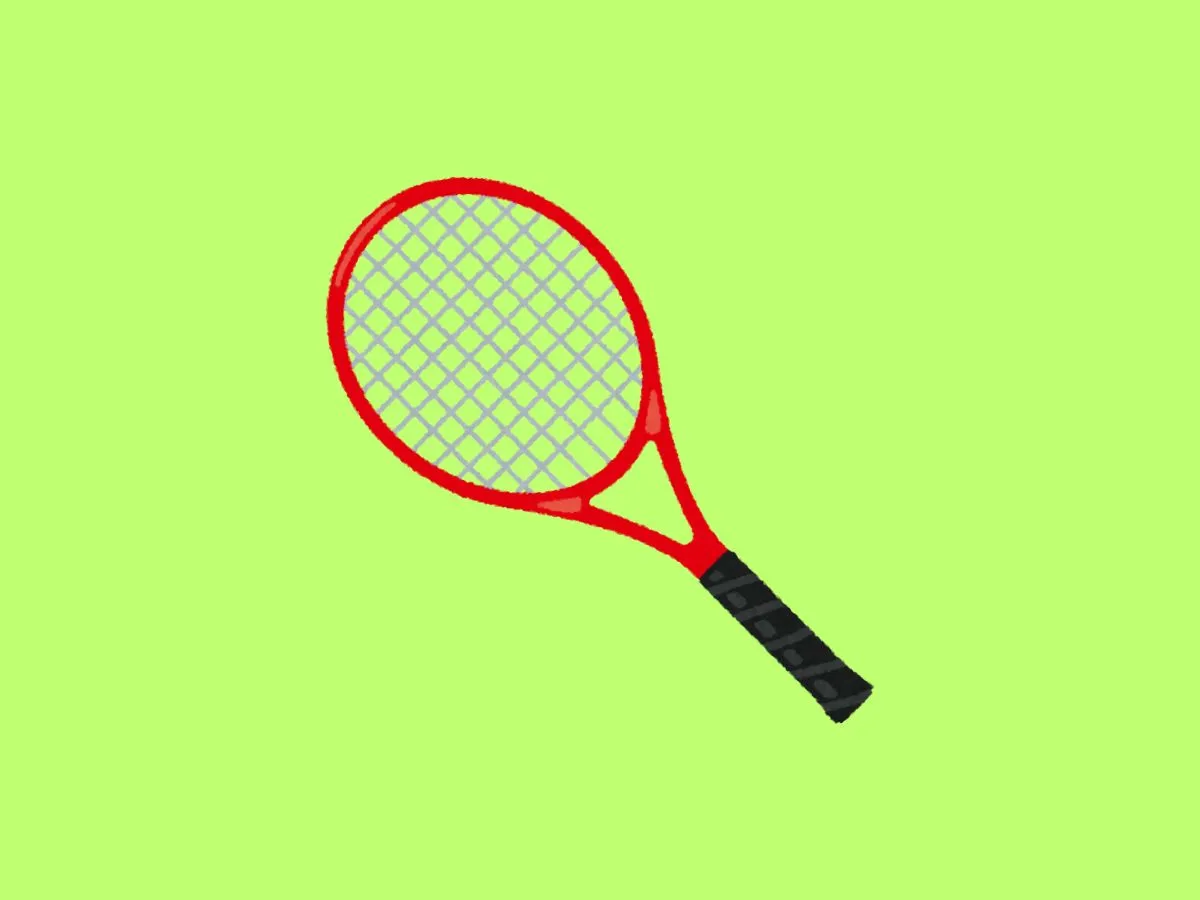
Tennis is a fun and exciting sport that anyone can learn. To get started, you’ll need a few basic things: a tennis racket, some tennis balls, and a court to play on. The first step is to learn how to hold your racket properly. This is called your grip, and it’s important for hitting the ball well. Next, you’ll want to practice your stance. This means standing with your feet shoulder-width apart and your knees slightly bent. This position helps you move quickly in any direction.
Once you’ve got your grip and stance down, it’s time to learn the basic strokes. The main strokes in tennis are the forehand, backhand, serve, and volley. Start by practising these without a ball, just to get used to the motion. Then, try hitting some balls against a wall or with a friend. Remember, it’s okay if you miss the ball at first. Everyone starts as a beginner!
As you practice, you’ll also learn about the court and the rules of the game. A tennis court has different lines that show where the ball should land. The most important rule is that you need to hit the ball over the net and into your opponent’s court. Don’t worry too much about scoring at first. Focus on having fun and improving your skills. With time and practice, you’ll be playing real games before you know it!
Mastering the Serve: Your Secret Weapon
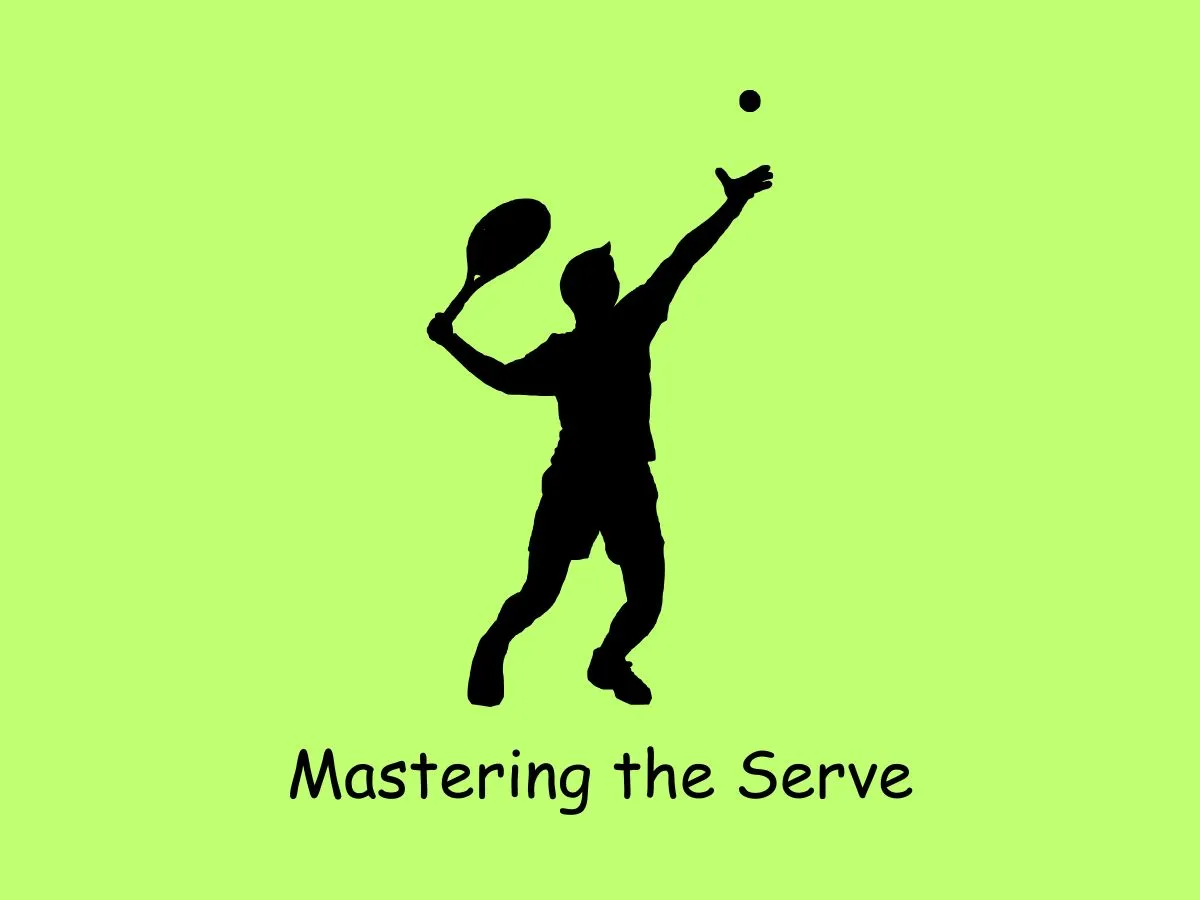
The serve is one of the most important shots in tennis. It’s how you start each point, and a good serve can give you a big advantage. To start, stand sideways at the baseline with your front foot pointing towards the net post. Hold the ball in your non-racket hand and your racket in your other hand. The key is to toss the ball up high enough so you can hit it at full stretch.
As you toss the ball, bring your racket back behind your head. This is called the backswing. When the ball reaches its peak, start swinging your racket up to meet it. Try to hit the ball at the highest point you can reach. This will help you get the ball over the net with more power. As you hit the ball, turn your body towards the net and follow through with your racket.
There are different types of serves you can learn as you improve. The most basic is the flat serve, which is hit straight with no spin. As you get better, you can try adding spin to your serves. A slice serve curves to the side, while a kick serve bounces high. Practice your serve regularly, even when you’re not playing a game. Remember, the serve is the only shot in tennis where you have complete control, so make it count!
Forehand Fundamentals: Power and Precision
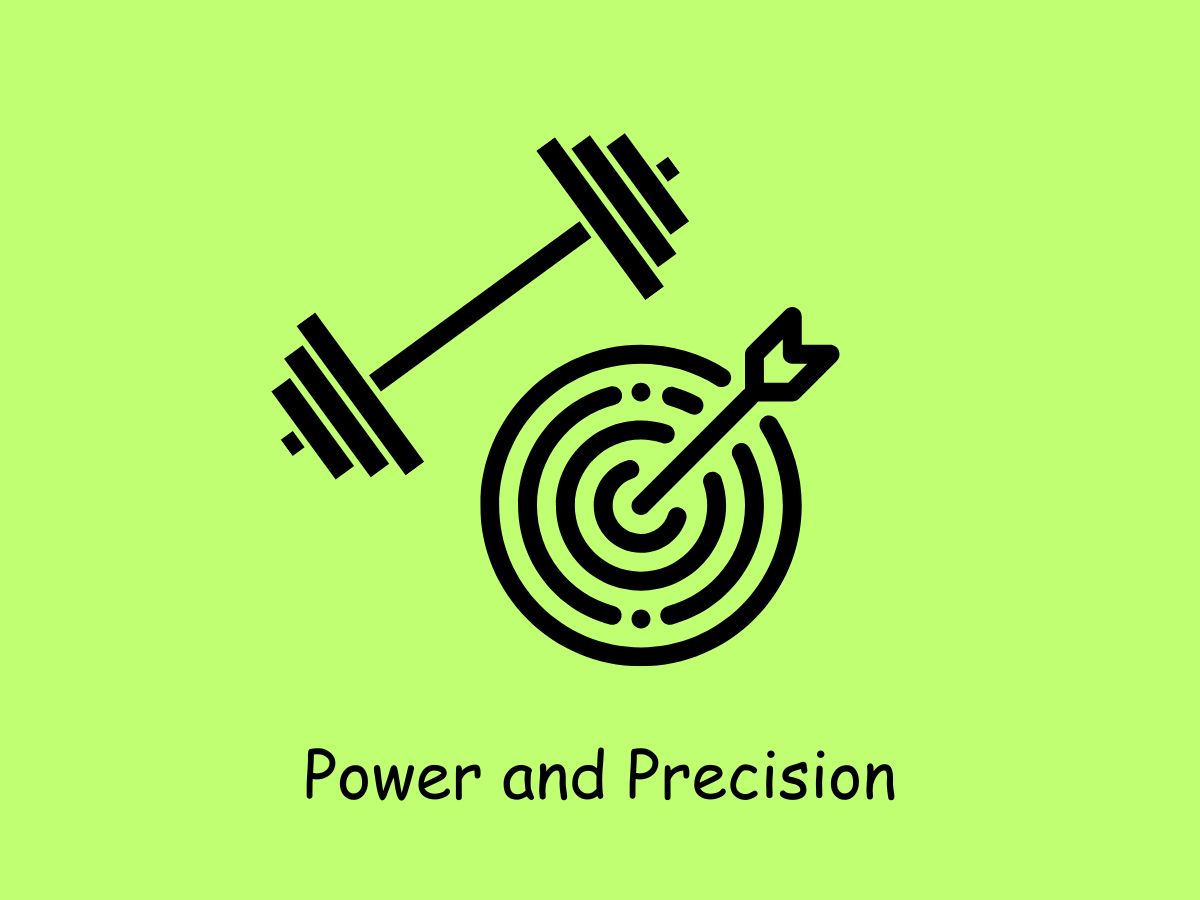
The forehand is often a player’s strongest shot, and mastering it can really improve your game. To start, turn your body sideways as the ball approaches. This helps you generate more power. Your feet should be shoulder-width apart, with your weight on your back foot. As you swing, transfer your weight to your front foot. This movement helps you hit the ball with more force.
The key to a good forehand is the grip and the swing path. Most players use what’s called the Eastern or Semi-Western grip. This allows you to hit with both power and spin. As you swing, your racket should follow a low-to-high path. This means starting low behind you and finishing high over your opposite shoulder. This motion helps you add topspin to your shot, which makes the ball dip down over the net.
Remember to keep your eye on the ball and make contact when it’s slightly in front of your body. After you hit, follow through with your swing. This helps with accuracy and prevents injury. Practice your forehand regularly, focusing on both power and control. As you improve, you can work on hitting to different parts of the court and adding more spin. A strong, consistent forehand can be a real game-changer in tennis!
Backhand Brilliance: One-Handed vs. Two-Handed
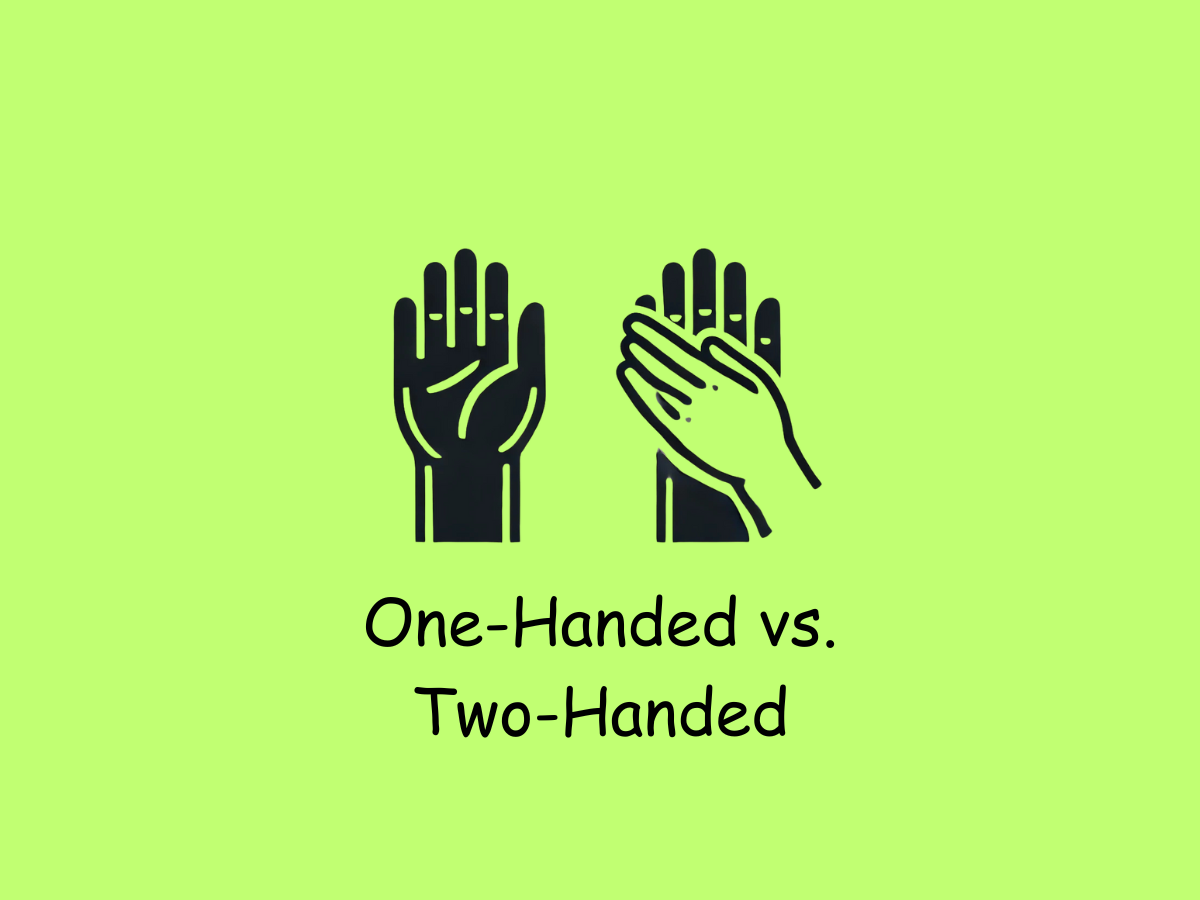
The backhand is a crucial shot in tennis, and players often debate whether a one-handed or two-handed backhand is better. Both styles have their strengths. The one-handed backhand is often seen as more artistic and versatile. Players like Roger Federer and Stan Wawrinka are known for their beautiful one-handed backhands. This style allows for more reach and can produce impressive angles and spin.
On the other hand, the two-handed backhand is generally considered more stable and powerful. It’s easier to learn and can be more consistent, especially when returning hard-hit balls. Many top players, like Novak Djokovic, use a two-handed backhand. It’s great for generating topspin and can be very effective in rallies.
Ultimately, the choice between one-handed and two-handed backhands comes down to personal preference and playing style. Some players find the one-handed backhand more natural, while others feel more comfortable with two hands. Both can be equally effective when mastered. The key is to practice and develop whichever style feels right for you.
Volley Techniques: Dominating the Net
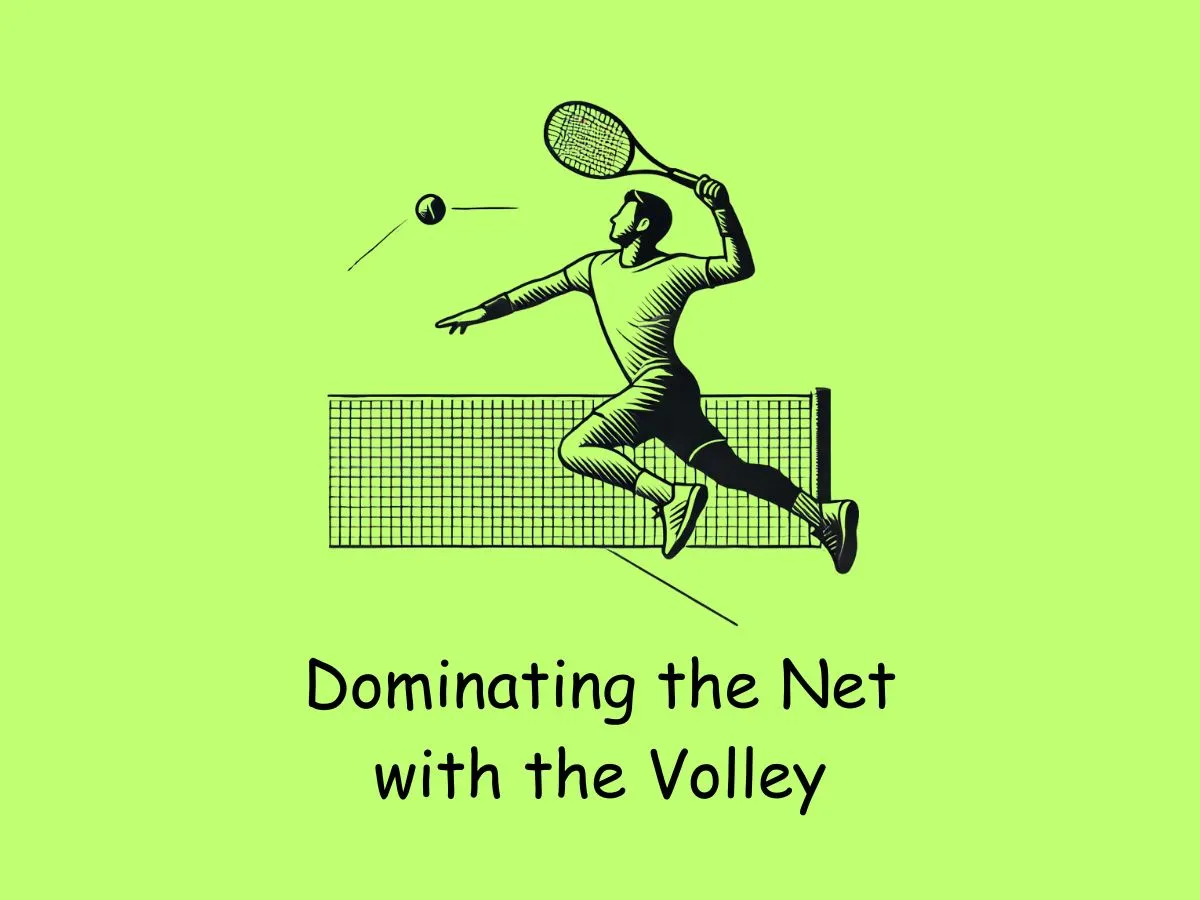
Volleys are an important part of tennis, especially when you’re playing close to the net. The key to a good volley is keeping things simple. You want to use short swings to guide the ball back into the court. Remember, by coming to the net, you’re already putting pressure on your opponent. You don’t need to hit a perfect winner every time.
When volleying, it’s important to keep your racket out in front of your body. This helps you make contact with the ball early and gives you more control. Try to keep your hands still and let the ball come to you. The closer you are to the net, the less you need to move your racket. A good drill is to practice volleys while trying to keep a pyramid of balls standing near the service line.
To improve your volleys, focus on moving forward into the ball. Lean your head and shoulders forward, almost like you’re lunging. This helps you transfer your weight through the ball, making your volleys stronger. It also helps you continue moving towards the net, which can put even more pressure on your opponent. Remember, good volleying is as much about positioning as it is about technique.
Footwork and Movement: The Foundation of Great Tennis
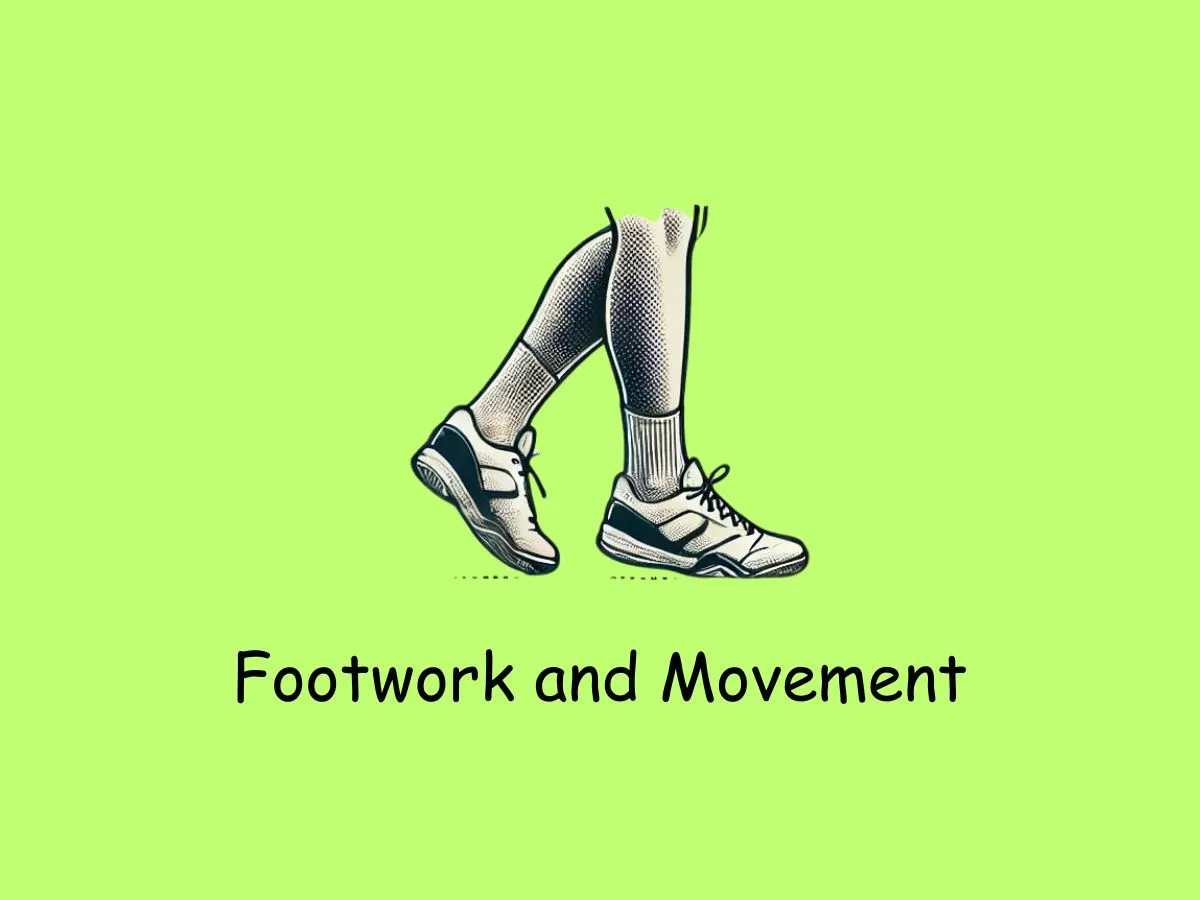
Good footwork is the hidden key to success in tennis. It’s what allows you to get to the ball in time and hit it well. The first step is crucial. You want to lean towards where you need to go and step with the leg closest to that direction. Make your first step strong and forceful, landing on the ball of your foot and toes.
There are different types of steps you need to master. The split step is a small jump you do just before your opponent hits the ball. It helps you react quickly. The crossover step is great for moving sideways fast. And transition steps help you change direction smoothly. Practice these different steps to improve your movement on the court.
Remember, good footwork isn’t just about being fast. It’s about being in control and balanced. Try to take 2-4 strong, powerful steps rather than lots of small, light ones. This will help you get to the ball in a good position to hit it. With practice, your footwork will become automatic, letting you focus on your shots and strategy. Good footwork is the foundation that lets you play great tennis.
Mental Game: Developing a Winning Mindset
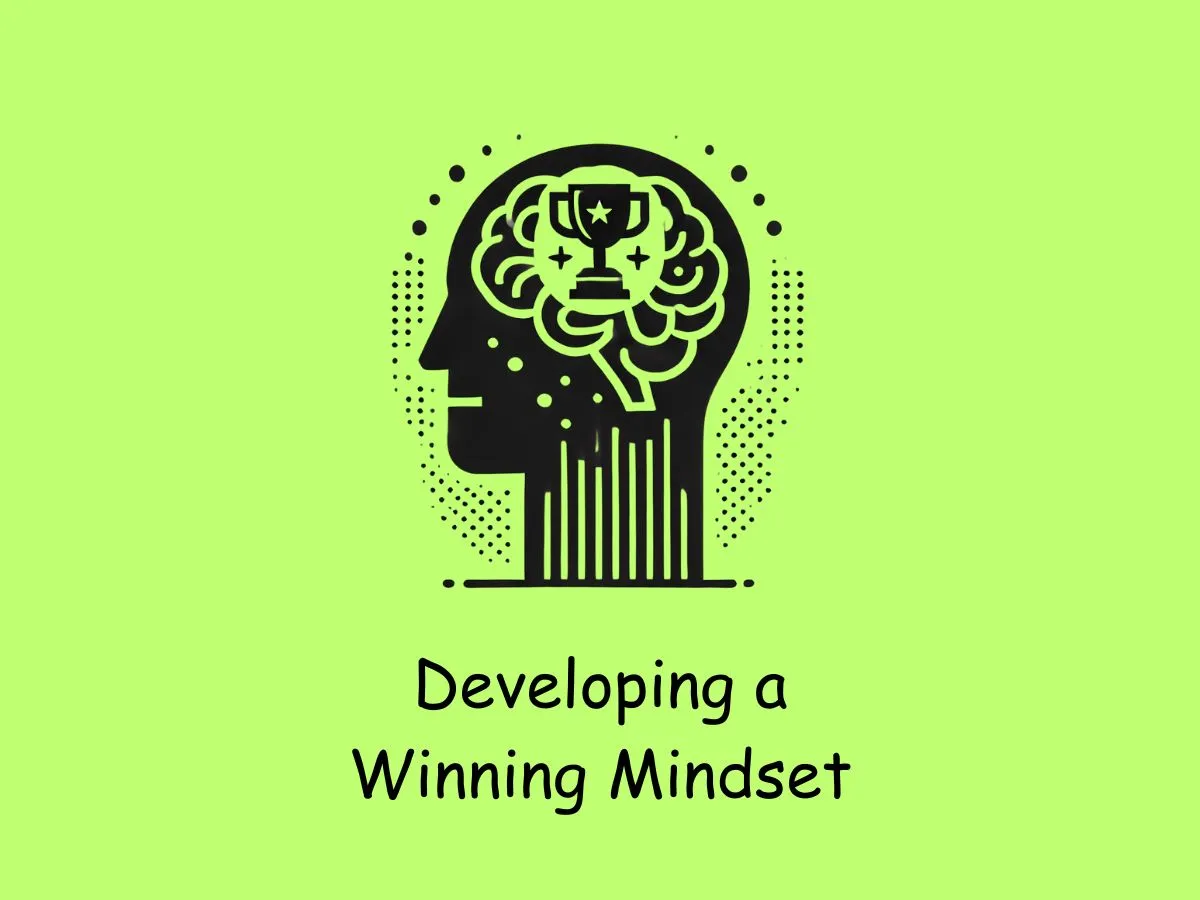
Tennis isn’t just about physical skills; it’s also about mental toughness. A winning mindset can make all the difference in a close match. The key is to focus on the process, not just the result. Instead of worrying about winning or losing, concentrate on playing your best game. This approach helps you stay calm under pressure and bounce back from setbacks.
One important part of a winning mindset is positive self-talk. When you make a mistake, don’t beat yourself up. Instead, encourage yourself like you would a friend. Say things like “You’ve got this” or “Next point is yours.” This helps build confidence and keeps you focused on the game. Also, try to stay in the present moment. Don’t dwell on past errors or worry about future points.
Another helpful technique is visualization. Before a match, imagine yourself playing well and succeeding. Picture your perfect serve or a great rally. This mental practice can boost your confidence and help you perform better on the court. Remember, developing a winning mindset takes time and practice, just like improving your physical skills.
Equipment Essentials: Choosing the Right Gear
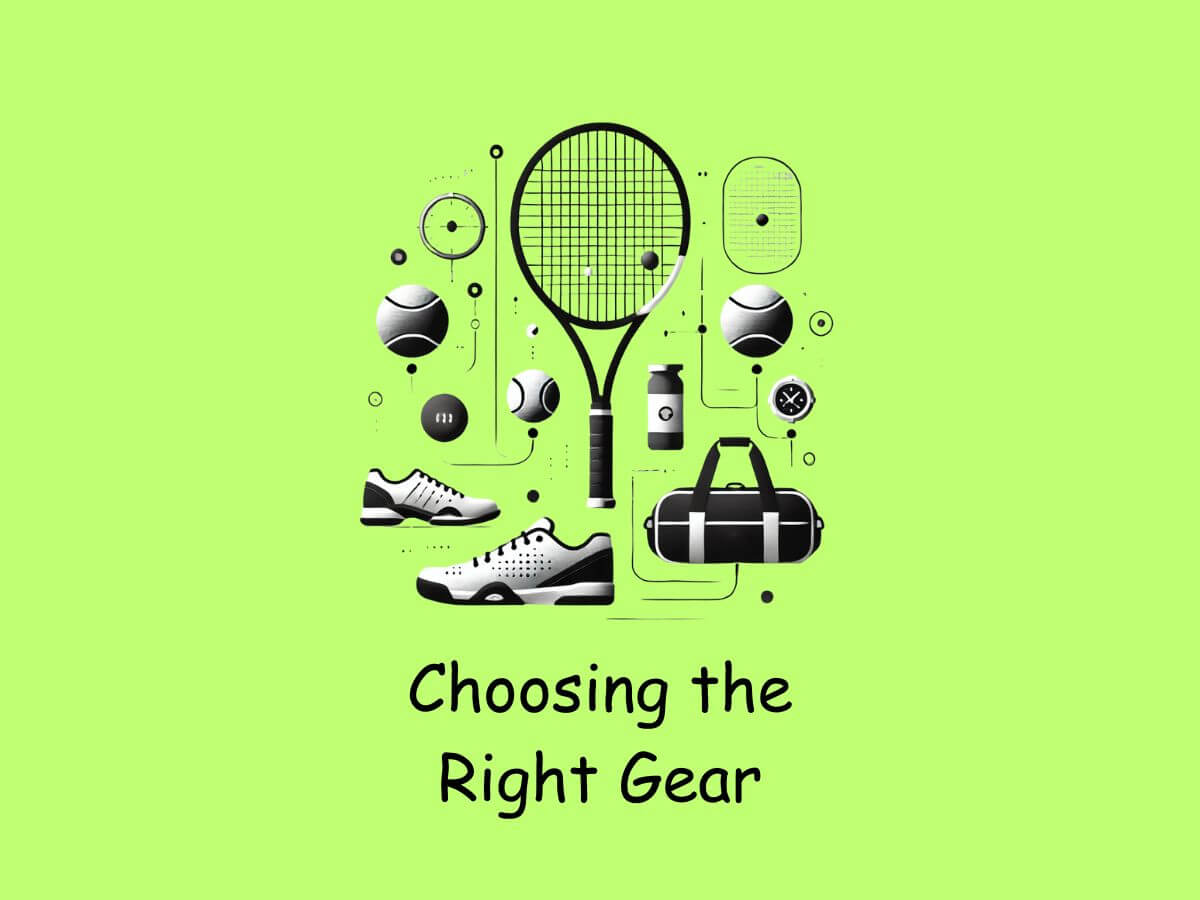
Having the right equipment is crucial for enjoying tennis and improving your game. The most important piece of gear is your racket. As a beginner, look for a racket that’s easy to handle and not too heavy. You don’t need to spend a lot; many good rackets for beginners cost less than $100. Make sure the grip size feels comfortable in your hand.
Tennis shoes are another essential item. They’re designed to support your feet during the quick movements in tennis. Regular sneakers won’t give you the right support and could lead to injuries. Also, don’t forget about tennis balls. Fresh balls bounce better and are more fun to play with. A can of three balls is usually enough to start with.
Other helpful items include a racket bag to protect your gear, comfortable clothing that allows you to move freely, and accessories like wristbands or a hat to keep sweat out of your eyes. As you play more, you might want to add things like spare grips or vibration dampeners. Remember, you don’t need everything at once. Start with the basics and add more as you go.
Practice Makes Perfect: Drills and Exercises for Improvement
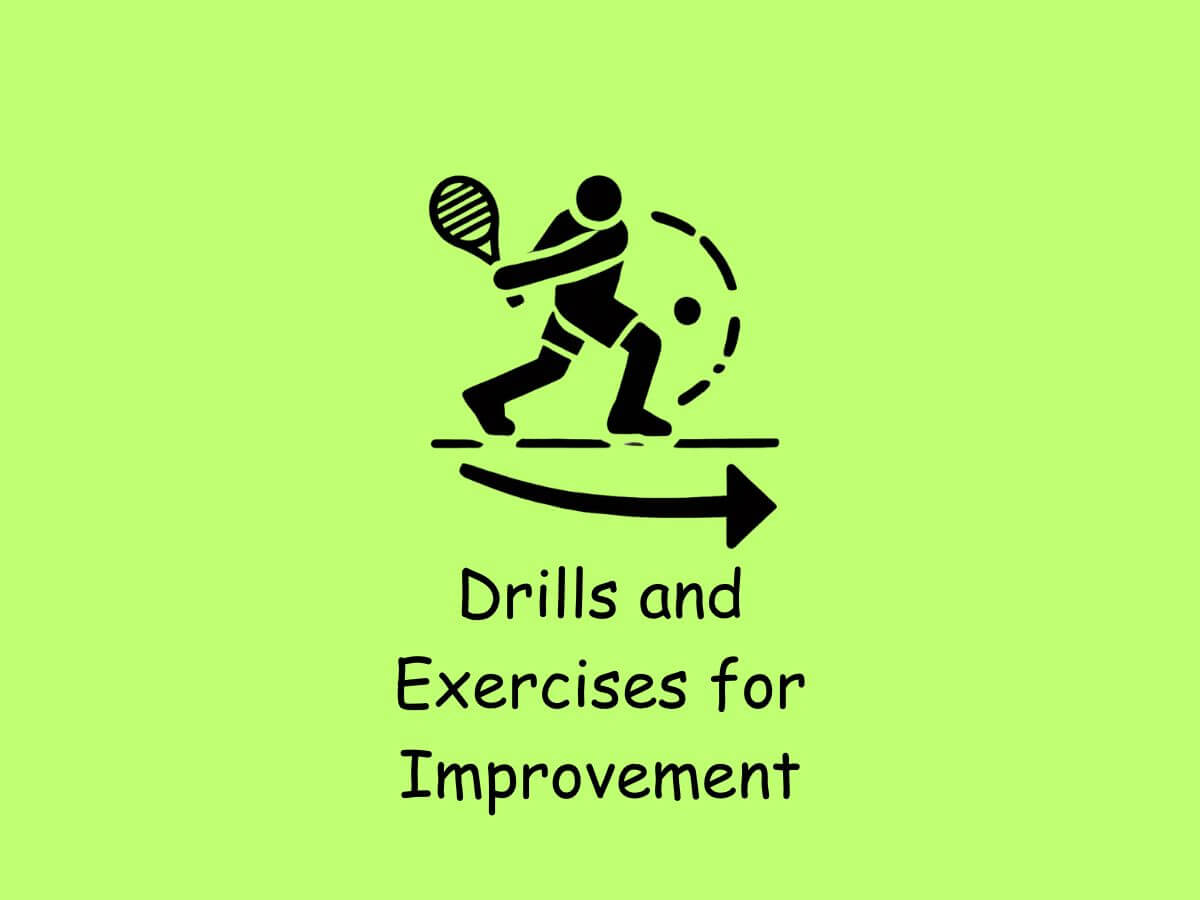
Improving your tennis techniques takes practice, and doing the right drills can help you progress faster. One basic drill is dribbling the ball with your racket. This helps improve your hand-eye coordination. Try to keep the ball bouncing in the same spot for as long as you can. As you get better, try to do it faster.
For groundstrokes, have a partner or coach toss balls to your forehand and backhand. Start by catching and throwing the ball back, then progress to hitting with your racket. This helps you learn the right motion for each stroke. You can also use a ball machine if you don’t have a partner. Remember to practice your split step as you hit each shot.
Volley drills are great for improving your net game. Stand at the net while a partner feeds you balls from the baseline. Try to hit volleys back without letting the ball bounce. To make it harder, have your partner aim balls at your body so you have to decide quickly whether to use a forehand or backhand volley. These drills will help you become more comfortable and confident at the net.
Conclusion
Now that you’ve learned about these essential tennis techniques, it’s time to put them into action. Don’t be afraid to try new things and experiment with different styles until you find what works best for you. Keep practicing regularly, and remember that progress takes time.
The key to mastering the fundamentals is consistent effort and a positive attitude. Believe in yourself, stay focused, and enjoy the process. You might find that by putting your mind to it, you can be just as efficient as others. With these strategies in your toolbelt, you will be that much closer to succeeding.
If you have any questions or need additional guidance, don’t hesitate to reach out. You can contact me at jaiden@jaidensmedia.com. I’m here to help you on your tennis journey!
FAQs
What’s the most important thing for a beginner to focus on?
For beginners, the most important thing is to learn the basic grip and stance. These will help you get comfortable with the racket and move quickly on the court.
How often should I practice my tennis serve?
Practice your serve as often as you can, even when you’re not playing a full match. The serve is the only shot you have complete control over, so it’s worth spending time perfecting it.
What’s the best way to improve my forehand?
To improve your forehand, focus on turning your body sideways, transferring your weight, and following a low-to-high swing path. This will help you generate power and topspin.
Is it better to have a one-handed or two-handed backhand?
Neither is “better” overall; it comes down to personal preference. One-handed backhands offer more reach, while two-handed backhands are generally more stable.
How can I improve my volleys?
To improve your volleys, keep your racket out in front of you, use short swings, and move forward into the ball. Position yourself well at the net, be reactive, and volley with purpose.
What’s the split step, and why is it important?
The split step is a small jump you do just before your opponent hits the ball. It helps you react quickly and move in any direction.
How can I develop a winning mindset?
Develop a winning mindset by focusing on the process, using positive self-talk, and visualizing success. Stay in the present moment and don’t dwell on past mistakes.
What kind of tennis racket should I buy?
As a beginner, look for a racket that’s lightweight and easy to handle. You don’t need to spend a lot of money to get a good beginner racket.
How important are tennis shoes?
Tennis shoes are essential for providing support and preventing injuries. Regular sneakers don’t offer the same level of support for the quick movements in tennis.
What are some good practice drills for tennis?
Good practice drills include dribbling the ball with your racket, practicing groundstrokes with a partner or ball machine, and doing volley drills at the net.
